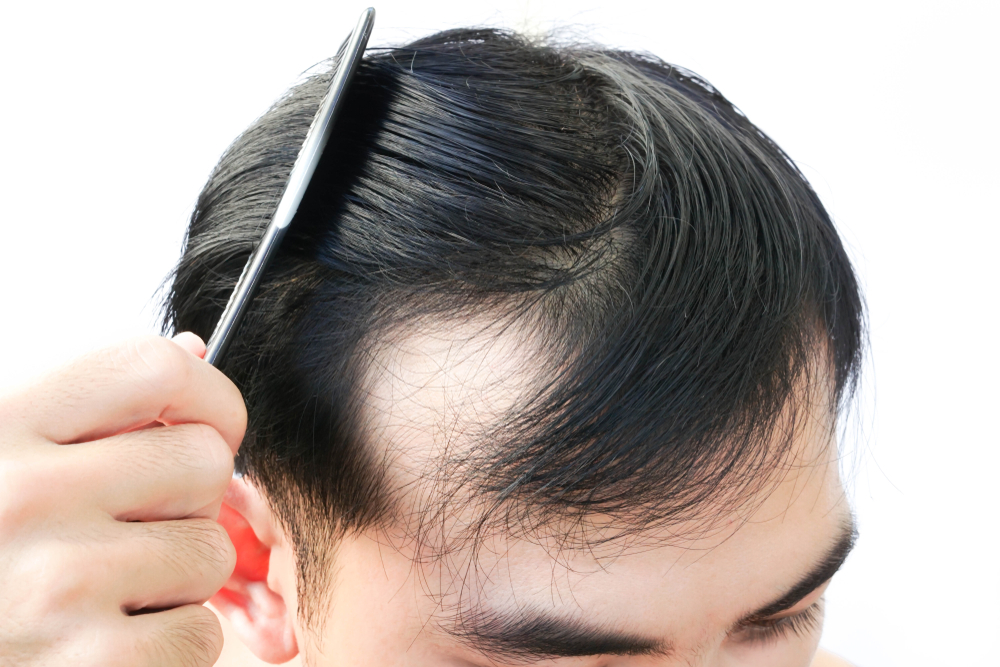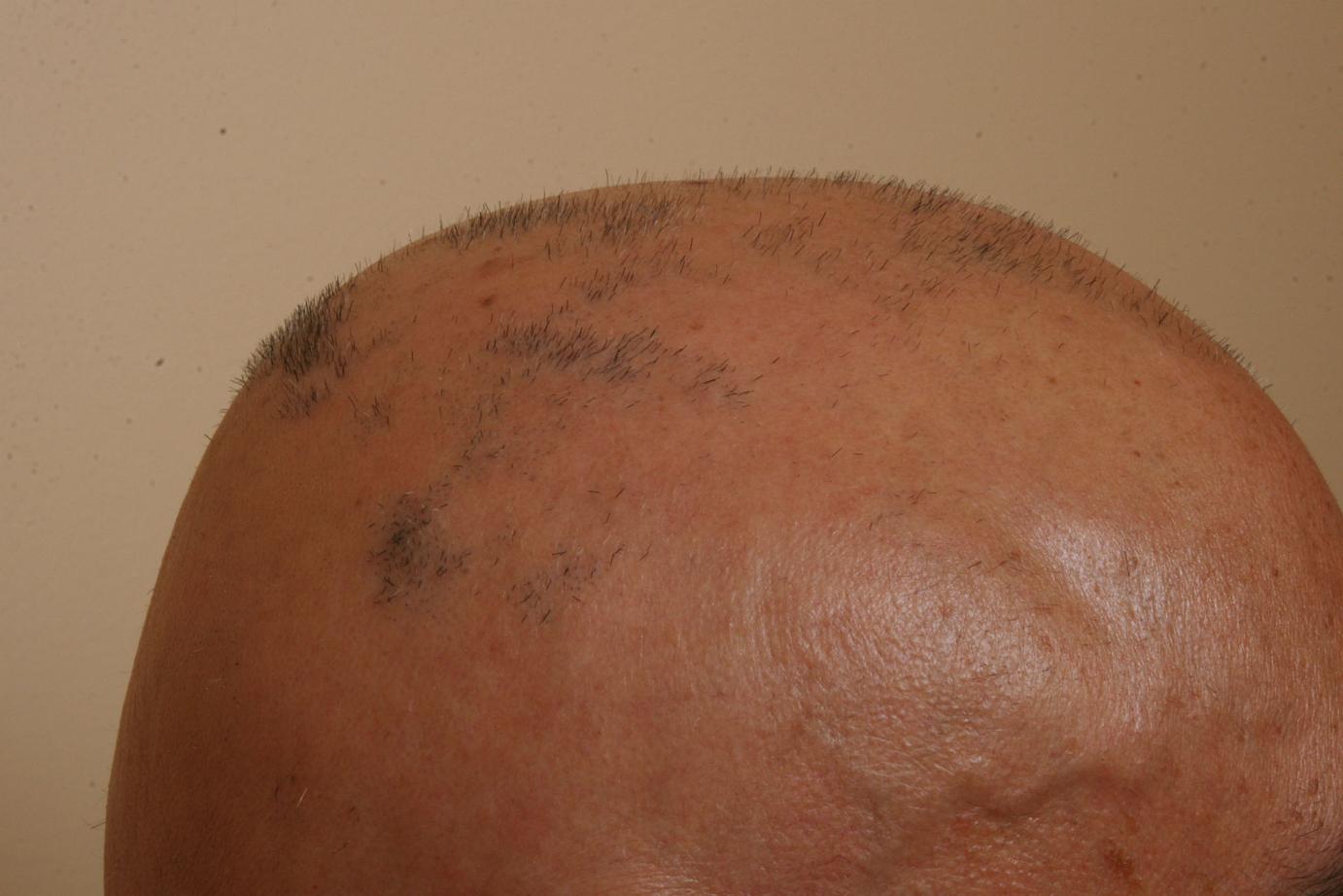Hair Loss Treatment

Hair loss is a common medical condition especially on the head (baldness) in men. Hair loss generally occurs as hair thinning and progresses to complete hair loss on major areas of the body such as legs, arms, back, and scalp. Although most people assume only men lose their hair, front scalp hair loss affects 58% of women and 75% of men. The common term for frontal baldness is “receding hairline” and typically advances to the mid to back of the head in male pattern baldness.
Causes of Hair Loss
Hair loss may occur because of various situations or medical factors. The term “Traction Alopecia” refers to hair loss induced by a person who pulls frequently on the hair. The same loss of hair can be induced by extreme force from a hairstyle such as cornrows or ponytails. Generally, hairstyles do not cause the loss of hair by themselves but if coupled with weak roots can contribute to mild baldness. Medical treatments such as chemotherapy or radiation, which severely weakens the body, are usually responsible for rapid and severe hair loss and may result in complete baldness. The hair often returns after the treatment stops. Individuals with hyperthyroidism also complain of patchy hair loss on the head, arms, and legs. Malnutrition, specifically lack of protein in the diet, often leads to thinning hair. Hair requires extensive protein use so without proper nutrition, the body cannot grow hair. Lastly, fungus infections of the hair follicle called folliculitis and ringworm infection of the scalp cause production of brittle hair that falls out easily.
Picture 1: Wide spread Alopecia Areata
Hair Loss Diagnosis
Although the hair loss is usually obvious, the underlying cause may take time to determine. Doctors will ask about social history to determine any life changes or new diets that can be contributing to hair loss. Often the reason for hair loss is simply older age.
Hair Loss Prevention
If genetic, an individual cannot prevent hair loss. Male pattern baldness, originally believed to be passed down from the mother’s grandfather, actually is contributed to by both parents. Maintaining a protein-rich diet and general health can reduce the occurrence of hair loss with old age. Some studies show that exercise may also increase the rate of hair growth.
Hair Loss Treatment
Forms of hair loss related to diet or medical treatment usually reverse when the circumstances stop. Patients undergoing cancer treatment should ask their doctor if the medications will contribute to hair loss. Other problems such as fungal infections require anti-fungal drugs to kill the organism. Normal hair growth usually returns once the treatment is finished. A few new drugs for men that promote hair growth and reduce loss are finasteride, Propecia, and minoxidil. Women have their own set of hair treatment drugs which are, finasteride, Aldactone, and Tagamet. Both men and women may opt for surgical hair restoration which transplants another person’s hair or an individual’s own hair to the bald area. Non-surgical hair replacements, such as wigs, are also extremely common and might be the most affordable alternative.
Hair Loss Support Group and Resources
Door No:17-67(2nd Floor),
Ponniyamma Temple Street,
Chittoor, Chittoor(District),
Andrapradesh-517247.

